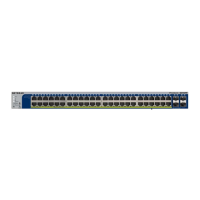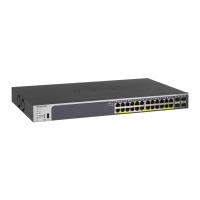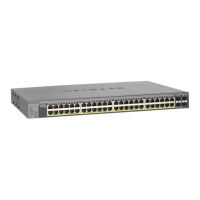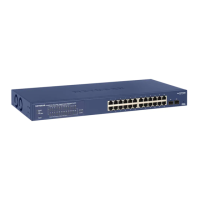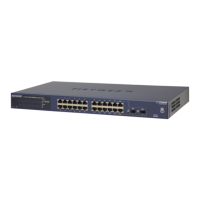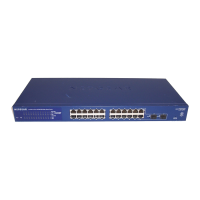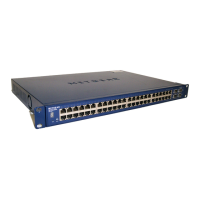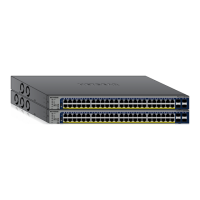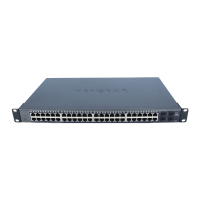73
GS728TS, GS728TPS, GS752TS, and GS752TPS Gigabit Smart Switches
• High Power Mode. Select the power-up mode for the port
• Disable: A port is powered in the IEEE 802.3af mode. (Default)
• Legacy: A port is powered using high-inrush current, which is used by legacy
powered devices (PDs) with a power requirement greater than 15W from power
up.
• Pre-802.3at. A port is powered in the IEEE 802.3af mode initially and switched to
the high-power IEEE 802.3at mode before 75 msec. Use this mode if the PD is
not performing Layer 2 classification, or if the switch is performing two-event
Layer 1 classification.
• 802.3at. A port is powered in IEEE 802.3at mode. If the PD class detected by the
switch is not Class 4 (type 2), the port will power up the PD, but only Class 4 PDs
can be powered up in the IEEE 802.3at mode.
• Power Limit Type. Select the type of power limit to use on the port, which is one of
the following:
• Class: Select this option to base the power limit on the detected class value.
When this value is selected, the user-configured value configured in the Power
Limit field is ignored.
• User: Select this option to base the power limit on the value configured in the
Power Limit field.
• None. Select this option to indicate that no power limit type is used on the port.
• Power Limit. Set the maximum amount of power that can be delivered by a port
when the Power Limit Type is User.
• Detection Mode. Select the PD detection mode the PSE port uses to detect an
attached device. The detection mode can be one of the following modes:
• Auto. The port performs four-point resistive detection (802.3af4point) followed by
legacy detection.
• Pre-ieee. The port performs legacy detection.
• ieee. The port performs four-point resistive detection (802.3af4point).
• Class. View the class of the PD connected to the port. The class defines the range of
power a PD is drawing from the system. The class is defined as:
• 0: 0.44–12.95W
• 1: 0.44–3.83W
• 2: 3.84–6.48W
• 3: 6.49–12.95W
• 4: 12.95–25.50W (802.3at Type 2 devices only)
• Timer Schedule. Select the timer schedule to use for the port. By default, no timer
schedules are configured. To create a timer schedule, use the Timer Schedule Global
Configuration page.
• Output Voltage. Shows the current voltage being delivered to device in Volts.
• Output Current. Shows the current being delivered to device in mA.
• Output Power. Shows the current power being delivered to device in Watts.
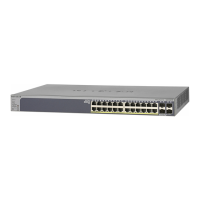
